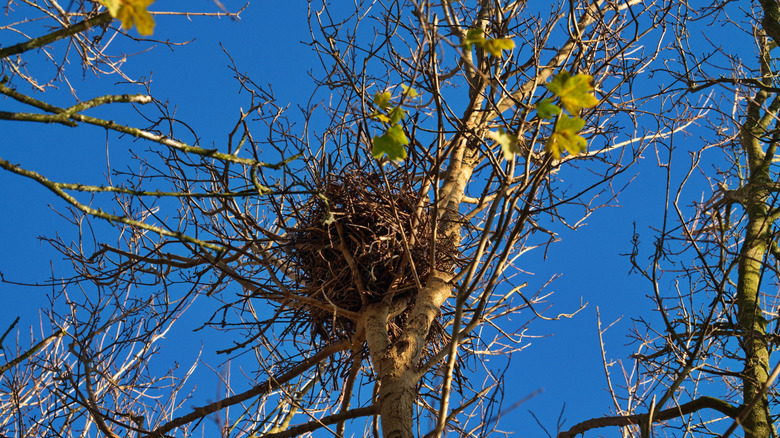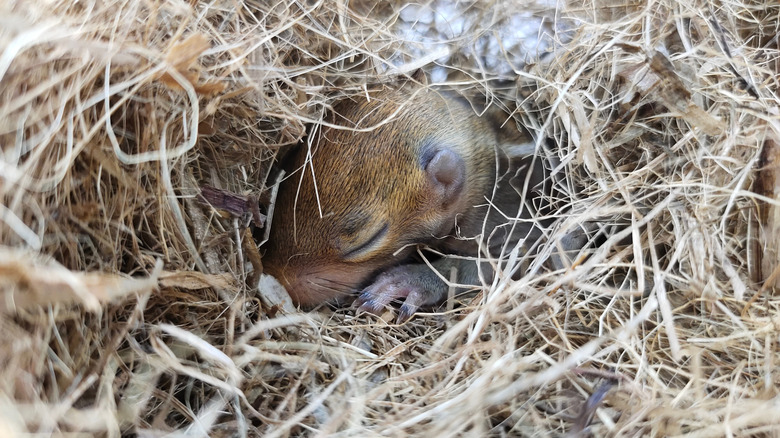Don't Break Down The Ball Of Leaves In Your Tree
As leaves start to fall and trees become bare, you might notice a strange ball of leaves in the branches, known as a "drey." This is, surprisingly enough, a squirrel's nest. The squirrels build them high in the treetops to provide safety. That doesn't deter some people from creating makeshift poking devices to remove the leaf balls themselves.
This is unsafe for both human and squirrel alike. As it happens, you really shouldn't poke that ball yourself. Birds use their nests only once a year, and the nests can safely be removed once the babies have flown the coop. However, squirrels can be known to use these nests year-round, keeping the critters cool in the summer and warm in the winter: While they do prefer to move to a warmer place like a hole in a tree for the colder months, one is not always available. The birthing season is also much longer for squirrels, with two birthing seasons each year, occurring from February to April for the first round, and August to September for the second. After birth, kits stay with their mother around 10 to 13 weeks.
Due to their high placement and circular shape, it can be hard to tell if a drey is empty, so it's best to leave it alone. Squirrels can get aggressive if you poke around their home, especially if babies are inside.
When should you have a squirrel's nest removed?
That doesn't mean all dreys have to become permanent parts of your property, however. There are situations where it is not only okay, but actually advised, to have the drey removed by a professional in wildlife control. The issue here is that while you don't want to hurt a nest full of baby squirrels, you also might not want them invading your bird feeders, much less killing flowers, eating through fences and windowsills, and getting into your home. Squirrels can cause major damage to your home's structure and bring in ticks and fleas.
Do not try to remove the drey yourself. For one thing, you could end up harming the mother and baby squirrels. For another, you could end up harming yourself. You could find yourself in a situation where you're face-to-face with an agitated mother squirrel who will defend her children if necessary, transferring rabies and other diseases to you in the process. And if the drey is high in the trees, simply the act of removal could be dangerous, even if the nest is empty.
There could also be legal ramifications. Squirrels may be protected wildlife in your area, meaning you may not be allowed to move an occupied squirrel's nest, or it may require a special permit. A professional can humanely get rid of squirrels and relocate the family in the proper way as required by your local government.

